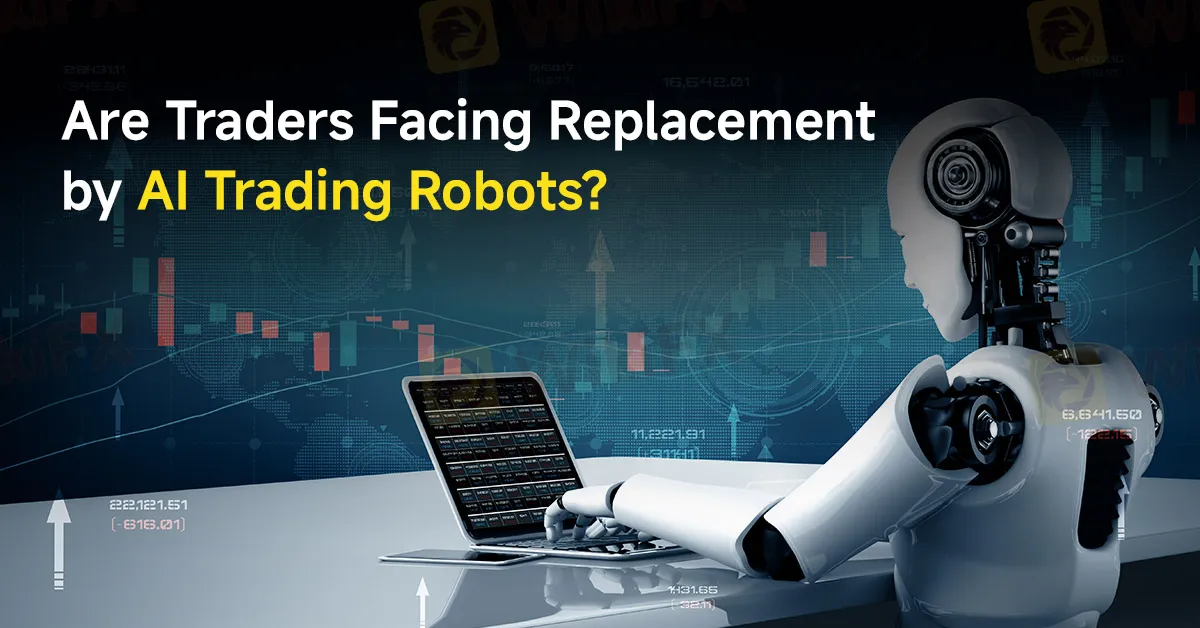简体中文
繁體中文
English
Pусский
日本語
ภาษาไทย
Tiếng Việt
Bahasa Indonesia
Español
हिन्दी
Filippiiniläinen
Français
Deutsch
Português
Türkçe
한국어
العربية
Are Traders Facing Replacement by AI Trading Robots?
Abstract:In the ever-evolving world of finance, the introduction of artificial intelligence (AI) trading robots is making waves, challenging the long-held dominance of human traders. Will human traders be replaced by AI trading robots eventually?

In the ever-evolving world of finance, the introduction of artificial intelligence (AI) trading robots is making waves, challenging the long-held dominance of human traders. According to verified trading records from MyFxBook and third-party validation, a new AI trading robot has generated an impressive $38,000 from a modest $5,000 investment within just one week. This exceptional performance has garnered global attention, prompting a critical examination of the transformative power of AI in trading and whether human traders can keep up.
AI trading robots leverage cutting-edge technology to analyse vast amounts of data, predict market trends, and execute trades with precision. The particular robot in question employs sophisticated algorithms to autonomously navigate the complexities of the financial markets, making split-second decisions that would be challenging for even the most seasoned human traders.
The flexibility offered by AI trading robots is noteworthy. Traders can choose from various trading speeds, ranging from slow and steady to fast and aggressive, allowing for tailored investment strategies. The ability to adapt and optimize trading patterns based on real-time data gives these robots a distinct advantage over their human counterparts.

Given the remarkable returns generated in such a short period, initial scepticism was understandable. The financial community is no stranger to grand claims, and promises of substantial returns often warrant caution. However, the full disclosure and independent verification by MyFxBook, a reputable third-party company known for its trade verification expertise, have quelled doubts. The validated performance of the AI trading robot has persuaded even the most cautious observers of its legitimacy and potential.
The rapid spread of this AI trading technology is undeniable. With 4,000 downloads to date, the robot is reportedly generating millions of dollars in daily profits for its users. Its user-friendly design, which allows for easy installation and immediate profitability, has further fuelled its popularity. Despite its growing acceptance, the future of AI trading robots remains shrouded in uncertainty. Rumours of interest from a large US-based hedge fund in acquiring the algorithm highlight the potential for significant industry shifts.
As AI trading robots continue to prove their efficacy, the question arises: can human traders keep up? The integration of AI in trading does not merely represent a technological advancement; it signifies a fundamental shift in how trading is conducted. The ability of AI to process and react to information at unprecedented speeds poses a challenge to human traders who rely on intuition, experience, and manual analysis.
However, the human element in trading is not entirely dispensable. The strategic thinking, emotional intelligence, and nuanced understanding of market sentiments that human traders bring to the table are aspects that AI, at least for now, cannot replicate fully. The future of trading may well lie in a hybrid model where AI handles data-intensive tasks, while human traders focus on strategic decision-making and oversight.
The advent of AI trading robots marks a revolutionary moment in the financial industry. With their proven ability to outperform traditional methods, these robots are set to redefine the landscape of trading. While human traders face the challenge of adapting to this new reality, their unique skills and insights will remain valuable. The true potential of AI in trading will likely be realized through a synergistic approach, combining the strengths of both machines and humans. As the industry evolves, staying informed and adaptable will be key to navigating this transformative era.

Disclaimer:
The views in this article only represent the author's personal views, and do not constitute investment advice on this platform. This platform does not guarantee the accuracy, completeness and timeliness of the information in the article, and will not be liable for any loss caused by the use of or reliance on the information in the article.
Read more

OctaFX Flagged by Malaysian Authorities
OctaFX has been officially listed on warning lists by both Bank Negara Malaysia (BNM) and the Securities Commission Malaysia (SC). These alerts raise serious concerns about the broker’s status and whether it is legally allowed to operate in Malaysia.

Why Your Worst Enemy in Trading Might Be You
Be Honest With Yourself: Are You Slowly Destroying Your Trading Account?

TradingPRO: A Closer Look at Its Licences
In an industry where safety and transparency are essential, the regulatory status of online brokers has never been more important. For traders seeking to protect their capital, ensuring that a platform operates under recognised and stringent oversight can make all the difference. Keep reading to learn more about TradingPRO and its licenses.

Oil Price Breakout Incoming? Investors Should Stay Alert
Oil prices are hovering around a critical level, with potential yet to be fully unleashed. Investors must prepare for sudden changes.
WikiFX Broker
Latest News
SkyLine Guide 2025 Malaysia: 100 Esteemed Judges Successfully Assembled
Vantage Markets Review 2025: Trusted Forex and CFD Trading Since 2009
Why STARTRADER Is Popular Among Traders?
A Guide to Intraday Forex Trading You Can't Miss Out
CONSOB Blocks Access to 13 Unauthorized Investment Websites
TradingPRO: A Closer Look at Its Licences
The world could be facing another ‘China shock,’ but it comes with a silver-lining
New SEBI Regulations on Intraday Trading
Everything You need to know about Barath Trade
IronFX Broker Review 2025: A Comprehensive Analysis of Trustworthiness and Performance
Currency Calculator


